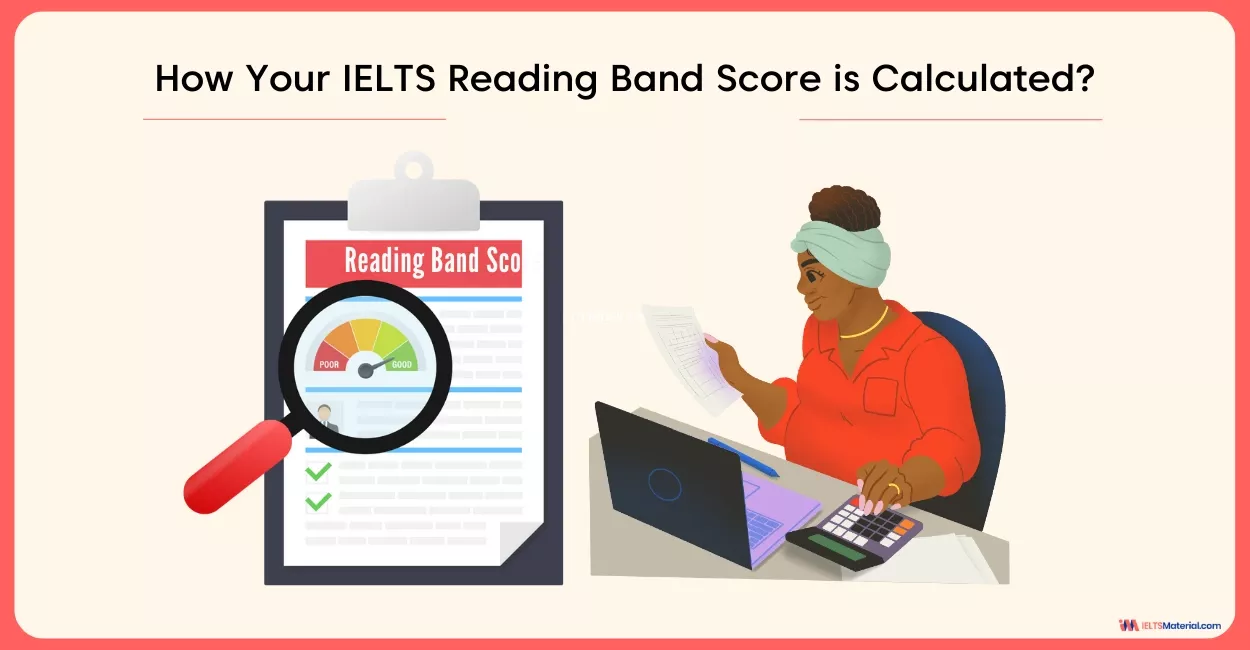The Secret of the Yawn - IELTS Reading Answers
11 min read
Updated On
-
Copy link
Buckle up to begin your exam preparations with our expert tricks based on the question types and score a band 9 with this “The Secret of the Yawn? IELTS Reading Answers” topic! And check the answer explanations and locations!
Table of Contents

Limited-Time Offer : Access a FREE 10-Day IELTS Study Plan!
The IELTS Reading passage, “The Secret Of The Yawn”, given an opportunity to practice and prepare for the IELTS Reading exam. You can attempt the questions and time yourself in order to understand the exam in real time.
The IELTS Academic Reading passage, “The Secret Of the Yawn”, has different types of questions. You should ideally take only 20 minutes to attempt to find the answers to the passage. The answers to the passage is given with the explanation which lets you identify the supporting reasons for the correct answer.
The following is the list of question types in this passage, "The Secret of the Yawn."
- IELTS Summary Completion Questions (Q.28 – Q.32)
- IELTS Matching Information (Q.33 – Q.37)
- IELTS True/ False/ Not Given (Q.38 – Q. 40)
Want to practice more? You can check out more IELTS Reading Practice Tests
Reading Passage
The Secret of the Yawn
A. When a scientist began to study yawning in the 1980s, it was difficult to convince some of his research students of the merits of “yawning science.” Although it may appear quirky, his decision to study yawning was a logical extension to human beings of my research in developmental neuroscience, reported in such papers as “Wing-flapping during Development and Evolution.” As a neurobehavioral problem, there is not much difference between the wing-flapping of birds and the face – and body-flapping of human yawners.
B. Yawning is an ancient, primitive act. Humans do it even before they are born, opening wide in the womb. Some snakes unhinge their jaws to do it. One species of penguins yawns as part of mating. Only now are researchers beginning to understand why we yawn, when we yawn and why we yawn back. A professor of cognitive neuroscience at Drexel University in Philadelphia, Steven Platek, studies the act of contagious yawning, something done only by people and other primates.
C. In his first experiment, he used a psychological test to rank people on their empathic feelings. He found that participants who did not score high on compassion did not yawn back. “We literally had people saying, ‘Why am I looking at people yawning?’” Professor Platek said. “It just had no effect.”
D. For his second experiment, he put 10 students in a magnetic resonance imaging machine as they watched video tapes of people yawning. When the students watched the videos, the part of the brain which reacted was the part scientists believe controls empathy – the posterior cingulate, in the brain’s middle rear.” I don’t know if it’s necessarily that nice people yawn more, but I think it’s a good indicator of a state of mind,” said Professor Platek. “It’s also a good indicator if you’re empathizing with me and paying attention.”
E. His third experiment is studying yawning in those with brain disorders, such as autism and schizophrenia, in which victims have difficulty connecting emotionally with others. A psychology professor at the University of Maryland, Robert Provine, is one of the few other researchers into yawning. He found the basic yawn lasts about six seconds and they come in bouts with an interval of about 68 seconds. Men and women yawn or half-yawn equally often, but men are significantly less likely to cover their mouths which may indicate complex distinction in genders.” A watched yawner never yawns,” Professor Provine said. However, the physical root of yawning remains a mystery. Some researchers say it’s coordinated within the hypothalamus of the brain, the area that also controls breathing.
F. Yawning and stretching also share properties and may be performed together as parts of a global motor complex. But they do not always co-occur – people usually yawn when we stretch, but we don’t always stretch when we yawn, especially before bedtime. Studies by J.I.P, G.H.A. Visser and H.F. Prechtl in the early 1980s, charting movement in the developing fetus using ultrasound, observed not just yawning but a link between yawning and stretching as early as the end of the first prenatal trimester.
G. The most extraordinary demonstration of the yawn-stretch linkage occurs in many people paralyzed on one side of their body because of brain damage caused by a stroke. The prominent British neurologist Sir Francis Walshe noted in 1923 what when these hemiplegics yawn, they are startled and mystified to observe that their otherwise paralyzed arm rises and flexes automatically in what neurologists term an “associated response.” Yawning apparently activates undamaged, unconsciously controlled connections between the brain and the cord motor system innervating the paralyzed limb. It is not known whether the associated response is a positive prognosis for recovery, nor whether yawning is therapeutic for reinnervation or prevention of muscular atrophy.
H. Clinical neurology offers other surprises. Some patients with “locked-in” syndrome, who are almost totally deprived of the ability to move voluntarily, can yawn normally. The neural circuits for spontaneous yawning must exist in the brain stem near other respiratory and vasomotor centers, because yawning is performed by anencephalic who possess only the medulla oblongata. The multiplicity of stimuli of contagious yawning, by contrast, implicates many higher brain regions.
Questions
Questions 28-32
Complete the Summary paragraph described below.
In boxes 28-32 on your answer sheet, write the correct answer with NO MORE THAN THREE WORDS.
A psychology professor drew a conclusion after the observation that it takes about six seconds to complete average yawning which needs 28……………………….. before the following yawning comes. It is almost at the same frequency that male and female yawn or half, yet behavior accompanied with yawning showing a 29………………………. in genders. Some parts within the brain may affect the movement which also has something to do with 30………………………. another finding also finds there is a link between a yawn and 31………………………. before a baby was born, which two can be automatically co-operating even among people whose 32………………………. is damaged.
Questions 33-37
Read paragraphs A-H.
Which paragraph contains the following information?
Write the correct letter A-H for questions 33-37
You may use any letter more than once.
33 The rate for yawning shows some regular pattern.
34 Yawning is an inherent ability that appears in both animals and humans.
35 Stretching and yawning are not always going together.
36 Yawning may suggest people are having positive notice or response in communicating.
37 Some superior areas in the brain may deal with the infectious feature of yawning.
Questions 38-40
Do the following statements agree with the information given in Reading Passage 3?
In boxes 38-40 on your answer sheet, write
TRUE – if the statement is true
FALSE – if the statement is false
NOT GIVEN – if the information is not given in the passage
38 Several students in Platek’s experiment did not comprehend why their tutor ask them to yawn back.
39 Some results from certain experiments indicate the link between yawning and compassion.
40 Yawning can show an affirmative impact on the recovery from brain damage brought by a stroke.
Book a free trial session with our IELTS experts to learn more tips and techniques of IELTS Reading!
The Secret of the Yawn - IELTS Reading Answers With Location
28 Answer: 68 seconds
Question type: Summary Completion
Answer location: Paragraph E, line 3
Answer explanation: Paragraph E, line 3 states that Provine found the basic yawn lasts about six seconds and they come in bouts with an interval of about 68 seconds. These lines illustrate that a psychology professor drew a conclusion after the observation that it takes about 6 seconds to complete average yawning which needs 68 seconds before the following yawning comes. Hence, the answer is 68 seconds.
29 Answer: (complex) distinction
Question type: Summary Completion
Answer location: Paragraph E, last line
Answer explanation: The last line of paragraph E reveals that men and women yawn or half-yawn equally often, but men are significantly less likely to cover their mouths which may indicate the complex distinctions in genders. These lines indicate that it is almost at the same frequency that male and female yawn or half, yet behavior is accompanied by showing a complex distinction in genders. Thus, the answer is the (complex) distinction.
30 Answer: breathing
Question type: Summary Completion
Answer location: Paragraph E, last line of 2nd paragraph
Answer explanation: Paragraph E, the last line of the 2nd paragraph states that ” A watched yawner never yawns,” Professor Provine said. However, the physical root of yawning remains a mystery. Some researchers say it’s coordinated within the hypothalamus of the brain, the area that also controls breathing. These lines suggest that some parts of the brain may affect the movement which also has something to do with breathing. Hence, the answer is breathing.
31 Answer: stretch/ stretching
Question type: Summary Completion
Answer location: Paragraph F
Answer explanation: The introductory lines of paragraph F states that yawning and stretching also share properties and may be performed together as parts of a global motor complex. In the last line, it is mentioned that there’s a link between yawning and stretching as early as the end of the first prenatal trimesters. We can deduce from these lines that according to another finding, there’s a link between a yawn and stretching as they share common properties and may be performed together as a part of the global motor complex. Hence, the answer is stretch/stretching.
32 Answer: brain
Question type: Summary Completion
Answer location: Paragraph G, line 3
Answer explanation: The 3rd line of paragraph G states that yawning apparently activates undamaged, unconsciously controlled connections between the brain and the cord motor system innervating the paralyzed limb. We can deduce from these lines that yawning activates undamaged and unconsciously controlled connections between the brain and cord motor system innervating the paralyzed limbs. Thus, the answer is the brain.
33 Answer: E
Question type: Matching Information
Answer location: Paragraph E
Answer explanation: Paragraph E illustrates that Robert Provine found the basic yawn lasts about six seconds and they come in bouts with an interval of about 68 seconds. Men and women yawn or half-yawn equally often, but men are significantly less likely to cover their mouths which may indicate the complex distinctions in genders. These lines illustrate that a psychology professor drew a conclusion after the observation that it takes about 6 seconds to complete average yawning which needs 68 seconds before the following yawning comes. Thus, it’s clear that the rate of yawning shows some regular pattern. Hence, the answer is E.
34 Answer: B
Question type: Matching Information
Answer location: Paragraph B
Answer explanation: Paragraph B illustrates that yawning is an ancient, primitive act. Humans do it even before they are born, opening wide in the womb. Some snakes unhinge their jaws to do it. One species of penguins yawns as part of mating. Only now are researchers beginning to understand why we yawn, when we yawn and why we yawn back. These lines suggest that yawning is an inherent ability that appears in both animals and humans. Thus, the answer is B.
35 Answer: F
Question type: Matching Information
Answer location: Paragraph F
Answer explanation: Paragraph F states that yawning and stretching also share properties and may be performed together as parts of a global motor complex. We can understand from these lines that yawning and stretching are not always going together. Thus, the answer is F.
36 Answer: D
Question type: Matching Information
Answer location: Paragraph D
Answer explanation: Paragraph D, the last line states, “I don’t know if it’s necessarily that nice people yawn more, but I think it’s a good indicator of a state of mind,” said Professor Platek. “It’s also a good indicator if you’re empathizing with me and paying attention.” We can understand from these lines that yawning may suggest people are having positive notice or response in communicating. Hence, the answer is D.
37 Answer: H
Question type: Matching Information
Answer location: Paragraph H
Answer explanation: The initial lines of paragraph H states that clinical neurology offers other surprises. Some patients with “locked-in” syndrome, who are almost totally deprived of the ability to move voluntarily, can yawn normally. We can understand from these lines that some superior areas in the brain may deal with the infectious feature of yawning. Hence, the answer is H.
38 Answer: Not Given
Question type: Yes/No/Not Given
Answer location: Paragraph D, last line
Answer explanation: The last line of paragraph D states, ” I don’t know if it’s necessarily that nice people yawn more, but I think it’s a good indicator of a state of mind,” said Professor Platek. “It’s also a good indicator if you’re empathizing with me and paying attention.”. These lines suggest Platek saying that he doesn’t know if it’s important that nice people yawn more and if it’s a good indicator. However, it’s not mentioned anywhere that the students who underwent Platek’s experiment didn’t understand why their tutor asked them to yawn. Thus, the answer is Not Given.
39 Answer: Yes
Question type: Yes/No/Not Given
Answer location: Paragraph D
Answer explanation: Paragraph D illustrates that for his second experiment, he put 10 students in a magnetic resonance imaging machine as they watched videotapes of people yawning. When the students watched the videos, the part of the brain which reacted was the part scientists believe controls empathy – the posterior cingulate, in the brain’s middle rear.” I don’t know if it’s necessarily that nice people yawn more, but I think it’s a good indicator of a state of mind,” said Professor Platek. “It’s also a good indicator if you’re empathizing with me and paying attention.” These lines indicate that some experiments were conducted, whose results revealed that there’s a link between yawning and compassion. Thus, the statement agrees with the information, so the answer is Yes.
40 Answer: No
Question type: Yes/No/Not Given
Answer location: Paragraph G
Answer explanation: Paragraph G states that the most extraordinary demonstration of the yawn-stretch linkage occurs in many people paralyzed on one side of their body because of brain damage caused by a stroke. These lines indicate that the demonstration of the yawn-stretch linkage occurs in many people paralyzed on one side of their body due to the brain damage caused by a stroke. Therefore, the statement contradicts the information, so, the answer is No.
Make Your Reading Skills Stand Out with IELTSMaterial
Improving your reading skills isn't just about reading a passage but it’s also about grasping the information clearly and having to reply back with good IELTS Grammar. Doing this all alone by practising test papers might be hard. So, you can get help from our IELTS experts or attend our FREE webinars to learn tips and improve your listening skills for the IELTS exam!
Check More IELTS Reading Answers
Practice IELTS Reading based on question types

Start Preparing for IELTS: Get Your 10-Day Study Plan Today!
Recent Articles

Nehasri Ravishenbagam

Haniya Yashfeen

Haniya Yashfeen

Haniya Yashfeen




Post your Comments